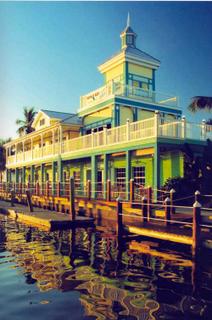Containers: How to do 100% search
1. There's been some talk about containers and ports. One problem has been the sheer volume of containers, and limited inspection facilities.
2. There is a solution. Each container could have a monitoring system embedded in the container wall. The detection system would monitor the cargo, and report problems to the ships bridge and Joint Staff.
More details on this 100% search after this editorial . . .
Editorial on the UAE, RNC, and the NSA unlawful activity
Why the inconsitent approach on overights, rule of law, and accountability?
I view this Container issue as a distraction from the NSA issue. It's curious the "RNC concerns" over the UAE revolve around issues of accountability, oversight, and reviews -- the same things with the NSA.
The RNC cannot explain why they are "alarmed, calling for investigations" over the UAE issue, but are silent on the President's unlawful NSA activity. The inconsistency makes me believe the "concern" is not genuine but a red herring to focus attention on non-Constitutional issues -- to the linking of the RNC. [ Click ]
I don't view the UAE issue with much confidence that the RNC is serious about reviewing the legal issues: They've fallen down on Phase II and the NSA. This UAE appears to be more of a distraction from the important impeachable offenses with the many NSA programs.
[ For your convenience, there is an NSA Hearing Archive; Click here to read other content in the NSA Hearing Archive.]
End Editorial
How to do 100% searches on containers
The 100% search approach is simple. Instead of inspecting the container, use the container to inspect the cargo. This involves placing sensors inside each container, and reporting the results to external monitors.
There is an important shift. The approach would change the sampling approach from [a] reviing smoe of the the container cargo; to [b] determing whether the communication system is or is not accurately communicating the cargo contents.
3. Random, no-notice tests can be sent through the container pipeline to verify the detection, communication, and sampling plans.
4. This approach would free up port based sampling systems, reduce container download time, expedite cargo transshipment to land-based systems, and increase the cargo sampling from 5% to 100%.
5. These are the features of this container monitoring system.
6. The cargo container would have a container-mounted monitoring system. The system would be attached to the container. The monitoring system would be small in size, easily installed, and detect the presence of suspect materials.
7. Specific threats, chemicals can be focused using adjustable detection system.
8. The program would develop, fabricate, and install a prototype on a container system.
9. The energy to support the container-monitoring would be self-contained. Solar powered cells would be embedded on the container, located in the ribs/low points for protection.
10. Detection system inside the container would be similar to that use to monitor presence of nuclear chemicals at an IAEA facility. If the detection system was faulty or tampered with this would prompt an alert.
11. This feature ensures nearby containers check whether this detection system is or is not working. If there is no response, nearby containers transmit a "non-response" message to the ships bridge. During download, this container is checked.
12. Ships bridge receives status, and immediate report. Nearby container detection system can be adjusted to confirm problem.
13. Joint Staff intelligence can adjust the focus, and type of chemical monitored, searched for.
14. Results provide a JPATS-like real time battle management display to Joint Staff.
15. One of the problems with port security is the sheer volume of containers. One approach has been to randomly sample containers. This has caused some concern: Not enough equipment to check the container.
16. An alterative approach is to change the monitoring model. Rather than screen containers, the model should use the container to do the monitoring.
17. This is similar to an Identification Friend or Foe [IFF] system used on private, commercial, and military aircraft. A similar system could be developed for containers.
18. The container reporting system will be self-contained, and have a self-check feature. The system will self report cargo contents and allow external monitors to adjust setting to increase or decrease attention on items of interest.
19. Reporting would be on an alert-basis to the ship's bridge. Joint Staff would have the ability real-time to know which containers have a positive alert for Nuclear, Biological, or Chemical weapon.
20. The approach will transition from a detection system at port of entry or exit, and move to an ongoing monitoring system within each container. sampling would transition from cargo contents to whether the reported contents does match what is inside the container. Periodically, containers would be randomly picked to verify the system is or is not correctly reporting cargo contents
21. The containers will have a self-check feature permitting nearby containers to verify that the system is or is not working. Results would be transmitted to the bridge and port authority.
22. System would have the ability to detect presence of cloaking agents, chemicals, or other material that may raise suspicious. Detection system will find and detect lead possibly used to cloak presence of nuclear weapons.
23. Detection and communication system will be small in size like a cell phone, and be compatible with laptop computers and hand held cell phones. There would be a scrambling feature which would prevent external monitoring equipment from detecting alerts.



<< Home